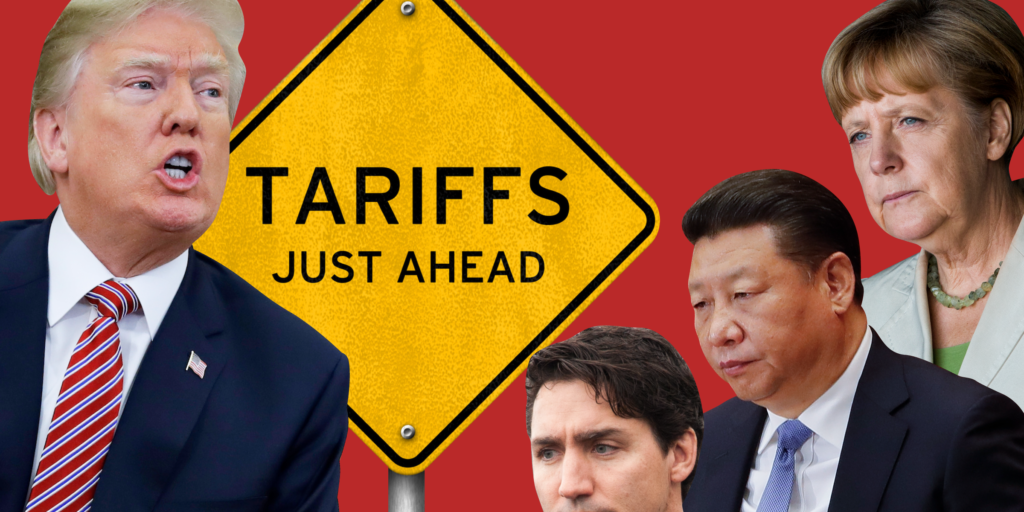
The impact of tariffs on various industries is undeniable. With Trump’s 25% tax on imports, many businesses struggle to stay afloat. This article highlights the ten industries most affected by these tariffs and explores how alternative funding can provide relief.
1. Automotive Industry
The 25% tariff on imported steel and aluminum has severely impacted automobile manufacturers. Increased costs have forced companies to raise prices, reducing consumer demand. Auto dealers and manufacturers can use alternative funding, such as merchant cash advances or invoice factoring, to manage cash flow and offset expenses.
2. Manufacturing Sector
Manufacturers that rely on imported raw materials face higher costs due to the tariffs. Small and mid-sized businesses experience financial strain, making it difficult to sustain operations. Asset-based lending and lines of credit can help manufacturers maintain production without sacrificing quality.
3. Agriculture and Farming
Farmers suffer from retaliatory tariffs imposed by other countries. This has led to decreased exports and revenue losses. With government subsidies often falling short, farmers can explore equipment financing and working capital loans to cover operational costs and invest in modern technology.
4. Retail and Consumer Goods
Retailers dependent on imported products face price hikes, leading to decreased sales and profit margins. To combat this, businesses can utilize revenue-based financing or business lines of credit to stock inventory and maintain steady cash flow.
5. Technology and Electronics
The tech industry heavily relies on imported components. Tariffs on semiconductors and other essential parts increase production costs, leading to higher prices for consumers. Tech startups and manufacturers can benefit from venture debt and alternative business loans to fund research and development.
6. Construction and Infrastructure
Steel and aluminum tariffs have significantly raised construction costs. Developers and contractors struggle with project delays and budget overruns. Alternative funding, such as bridge loans and equipment leasing, can provide financial support to complete projects on time.
7. Textile and Apparel Industry
Fashion brands and clothing manufacturers that source materials from overseas experience increased production costs. This affects pricing and consumer demand. Supply chain financing and factoring services can help businesses maintain operations and fulfill orders efficiently.
8. Energy and Renewable Resources
Solar panels and wind turbines rely on imported components, making them vulnerable to tariffs. Higher costs slow down innovation and project development. Alternative financing options, such as green loans and private investments, can support businesses in this sector.
9. Food and Beverage Industry
Imported ingredients and packaging materials drive up costs for food and beverage companies. This leads to increased product prices and reduced profit margins. Merchant cash advances and short-term loans can help businesses sustain their operations and manage inventory costs.
10. Healthcare and Medical Equipment
Medical device manufacturers rely on imported parts to produce essential healthcare products. Tariffs drive up prices, affecting hospitals and patients alike. Healthcare businesses can explore equipment financing and business credit lines to ease financial burdens.
How Alternative Funding Can Help
With rising costs due to tariffs, traditional financing options may not be accessible to all businesses. Alternative funding provides flexible solutions, including:
- Merchant Cash Advances – Quick access to capital based on future sales.
- Invoice Factoring – Immediate cash flow by selling unpaid invoices.
- Business Lines of Credit – On-demand funding for operational expenses.
- Asset-Based Lending – Loans secured by business assets.
- Revenue-Based Financing – Repayment based on earnings.
Long-Term Strategies for Businesses Affected by Tariffs
While alternative funding can provide immediate relief, businesses must also focus on long-term strategies to minimize tariff-related challenges. Some effective approaches include:
- Diversifying Suppliers – Sourcing raw materials from countries with lower tariff rates can reduce costs.
- Investing in Domestic Production – Increasing local manufacturing capabilities can lessen reliance on imports.
- Negotiating with Suppliers – Working with international suppliers to share the tariff burden can help mitigate price increases.
- Exploring Automation and Technology – Reducing labor costs through automation can offset higher material expenses.
- Strengthening Customer Relationships – Transparent communication with consumers about price adjustments and quality assurance can maintain loyalty.
Final Thoughts
The 25% tariff has created financial hurdles across multiple industries, but businesses can adapt and thrive by leveraging alternative funding solutions and long-term strategies. By being proactive and exploring creative financial solutions, companies can navigate economic uncertainties and sustain growth in an evolving market.

